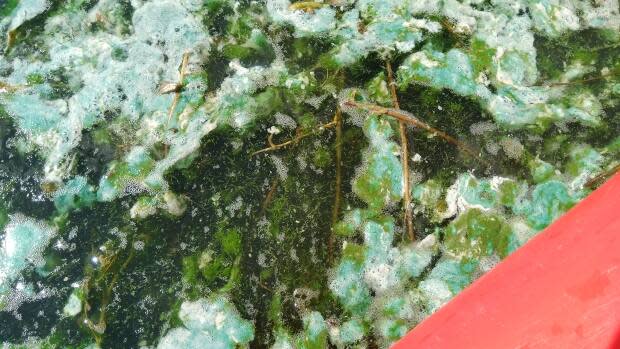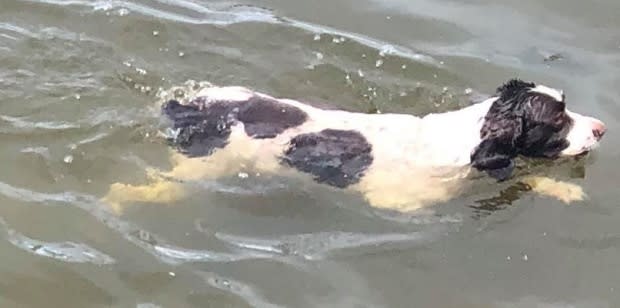Blue-green algae bloom identified in reservoir north of Medicine Hat
Alberta Health Services has issued a blue-green algae bloom advisory for the Acadia Valley Reservoir, located approximately 160 kilometres north of Medicine Hat.
Blue-green algae, also known as cyanobacteria, is a naturally occurring organism that looks like scum, fuzz or grass clippings on the surface of lakes and ponds.
As its name suggests, it can often be blue-green, but it can also be brown, greenish-brown and pinkish-red, typically emitting a smell of grass or must.
Bruce Johnson observed some blue-green algae in the Acadia Municipal Reservoir on Aug. 13 and said he reported it to the public health inspector in Brooks.

Contact with the organism should be avoided, according to AHS, as doing so or ingesting water that contains blue-green algae can lead to skin irritation, rash, sore throat, fever, vomiting and diarrhea, among other symptoms.
Though symptoms usually subside in one to two days, they are more pronounced in children — and exposure can be fatal to pets.
That was the case for nine-year-old springer spaniel Daisy last month, who spent less than 30 seconds in water with blue-green algae, but died later that night.
"It was so fast," Brittney Struck told CBC News last month.

Residents living near the Acadia Valley Reservoir or those who may visit the area should not swim where the organism is visible. If contact is made, tap water should be used to wash off as soon as possible.
Visitors and residents should also never drink or cook with untreated water, and boiling water will not remove the toxins from the algae.
Swimming where blooms are not visible is still permissible, according to AHS.
Other blue-green advisories across Alberta remain in effect, including in areas of Calling Lake and in Cypress Hills Provincial Park.
Because wind and weather can move the algae around in various areas, advisories remain in place until AHS deems they are safe to remove.
For a full list of current advisories, click here.

